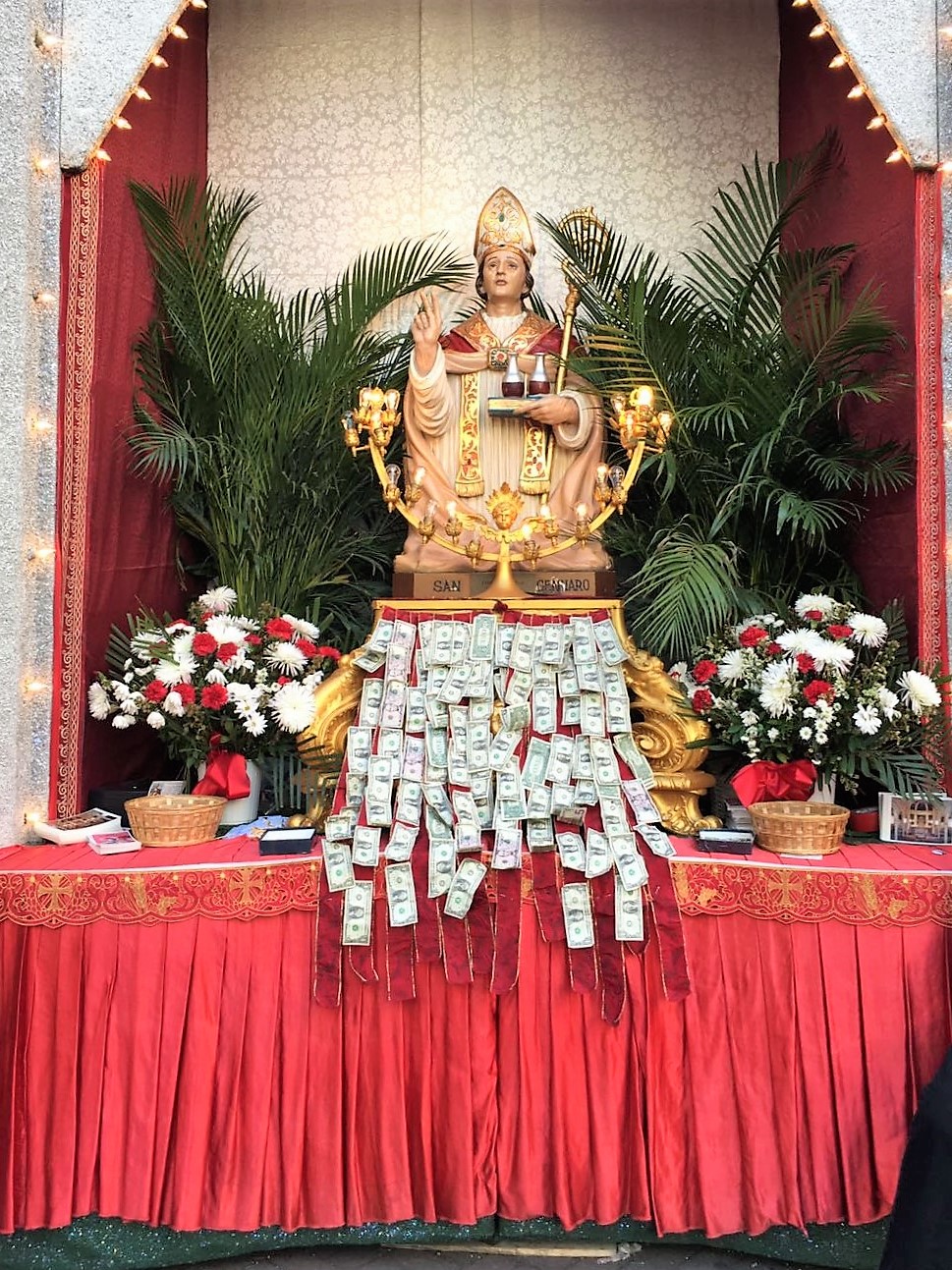by Umberto Pagano, exclusive for The diagonales –
11 DAYS
There is no doubt that the relationship that the Neapolitans have with their patron saint, San Gennaro, is characterized by magical elements and by a prevalence of a profane dimension over the sacred one. But to witness an almost complete profanization of the cult of the saint, you need to move about 7,000 km East, curiously at the same latitude, in New York, Manhattan, Little Italy, every year around September 19th, the day on which the Catholic Church celebrates, in fact, San Gennaro.
But in Little Italy they are not satisfied with a daily feast, since 1926 they grant themselves 11 days of celebration, before, during and after the topical date of September 19th.
Little Italy is no longer like decades ago and the Italian “community” is now deeply integrated into New Yorker life an society. The original Little Italy was gradually eroded and incorporated by the neighbouring China Town. Today, if you really want to find a high density of Italian-Americans, you have to go on Arthur Avenue, in the Bronx, or in the suburb of Bensonhurs in Brooklyn, or to Staten Island.
But Mulberry Street, in Lower Manatthan, the first large Neapolitan settlement in New York, remains a symbol, as is the feast of San Gennaro. Eleven days of “ostensions” of busts of the saint and offerings of dollars, blessing of the stalls, inevitable evenings dedicated to Enrico Caruso, old Neapolitan songs, processions, exorbitant quantities of meatballs and fried zeppole and competitions of cannoli eaters (cannoli, actually, have nothing to do with Naples… but cultures are known to hybridize continuously, and Elizabeth Street, the first settlement of the Sicilians, is too close not to incorporate the cannoli into the symbolic apparatus of the celebrations … with all due respect to babà eaters J) .
Obviously, what is staged has little to do with the contemporary Neapolitan reality – and perhaps with the Neapolitan reality tout court – but this is exactly what makes the feast particularly interesting. What is represented here is a sort of simulacrum, a copy of a non-existent original. A fictional narrative functional to expectations, to the image of a fantastically “authentic” Naples. But recognition mechanisms often have little to do with historical “reality” or “truth”. How much, today, the feast of San Gennaro is “identitary” and how much it is a business machine, a “product” to sell to New Yorkers and tourists, after all, is irrelevant.

11 GIORNI
Non c’è dubbio che il rapporto che i napoletani hanno con il loro santo patrono, San Gennaro, è connotato da elementi magici e da una prevalenza del profano sulla dimensione sacra. Ma per assistere ad una pressoché completa profanizzazione del culto del santo, bisogna spostarsi di circa 7.000 km verso est, curiosamente alla stessissima latitudine, a New York, Manhattan, Little Italy, ogni anno intorno al 19 settembre, giorno in cui la Chiesa Cattolica celebra, appunto, San Gennaro.
Ma a Little Italy non si accontentano di una celebrazione giornaliera, dal 1926 si concedono ben 11 giorni di festa, prima, durante e dopo la topica data del 19 settembre.
Little Italy non è più quella di qualche decennio fa e la “comunità” italiana è ormai profondamente integrata nella vita newyorkese. La Little Italy originaria è stata progressivamente erosa e inglobata dalla confinante China Town. Oggi, se proprio si vuole trovare una elevata densità di italoamericani, bisogna andare sulla Arthur Avenue, nel Bronx, o nel sobborgo di Bensonhursa Brooklyn, o a Staten Island.
Ma Mulberry Street, a Lower Manatthan, il primo vasto insediamento napoletano a New York, resta un simbolo, così come la festa di San Gennaro. Undici giorni tra “ostensioni” di busti del santo e offerte in dollari, benedizione delle bancarelle, immancabili serate dedicate a Enrico Caruso, vecchie canzoni napoletane, processioni, quantità esorbitanti di polpette e zeppole fritte e gare di mangiatori di cannoli (che in realtà con Napoli c’entrano praticamente nulla… ma, si sa, le culture si ibridano, continuamente, e Elizabeth Street, il primo insediamento dei siciliani, è troppo vicina per non inglobare i cannoli nell’apparato simbolico delle celebrazioni… con buona pace dei mangiatori di babà).
Ovviamente, quello che viene messo in scena a poco a che vedere con la realtà napoletana contemporanea – e forse con la realtà napoletana tout court – ma è proprio questo che rende la festa particolarmente interessante. Ciò che si rappresenta è una sorta di simulacro, di copia di un originale inesistente. Una narrazione finzionale funzionale alle aspettative, all’immagine di una Napoli fantasmaticamente «autentica». Ma i meccanismi di riconoscimento spesso poco a che vedere con la “realtà” o con la “verità” storica. Quanto, oggi, la festa di San Gennaro sia “identitaria” e quanto sia una macchina di business, un “prodotto” da vendere a newyorkesi e turisti, in fondo, è irrilevante.

Umberto Pagano insegna “Sociologia della Cultura” presso l’Università “Magna Graecia” di Catanzaro. E’ tremendamente appassionato di Bach. Ha 47 anni, una moglie, due figli e tre pesci rossi. Non ama essere fotografato. La sua ombra si.





